Related Research Articles

The British Museum is a public museum dedicated to human history, art and culture located in the Bloomsbury area of London. Its permanent collection of eight million works is the largest in the world. It documents the story of human culture from its beginnings to the present. The British Museum was the first public national museum to cover all fields of knowledge.

The Palestinian National Authority, commonly known as the Palestinian Authority and officially the State of Palestine, is the Fatah-controlled government body that exercises partial civil control over West Bank areas "A" and "B" as a consequence of the 1993–1995 Oslo Accords. The Palestinian Authority controlled the Gaza Strip prior to the Palestinian elections of 2006 and the subsequent Gaza conflict between the Fatah and Hamas parties, when it lost control to Hamas; the PA continues to claim the Gaza Strip, although Hamas exercises de facto control. Since January 2013, the Palestinian Authority has used the name "State of Palestine" on official documents, although the United Nations continues to recognize the Palestinian Liberation Organization (PLO) as the "representative of the Palestinian people".
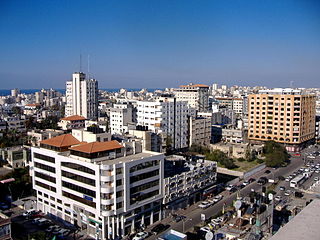
Gaza, also called Gaza City, is a Palestinian city in the Gaza Strip, with a population of 590,481, making it the largest city in the State of Palestine.

Phidias or Pheidias was an Ancient Greek sculptor, painter, and architect, active in the 5th century BC. His Statue of Zeus at Olympia was one of the Seven Wonders of the Ancient World. Phidias also designed the statues of the goddess Athena on the Athenian Acropolis, namely the Athena Parthenos inside the Parthenon, and the Athena Promachos, a colossal bronze which stood between it and the Propylaea, a monumental gateway that served as the entrance to the Acropolis in Athens. Phidias was the son of Charmides of Athens. The ancients believed that his masters were Hegias and Ageladas.

Sozopol is an ancient seaside town located 35 km south of Burgas on the southern Bulgarian Black Sea Coast. Today it is one of the major seaside resorts in the country, known for the Apollonia art and film festival that is named after one of the town's ancient names.

Harpocrates was the god of silence, secrets and confidentiality in the Hellenistic religion developed in Ptolemaic Alexandria. Harpocrates was adapted by the Greeks from the Egyptian child god Horus, who represented the newborn Sun, rising each day at dawn. Harpocrates's name was a Hellenization of the Egyptian Har-pa-khered or Heru-pa-khered, meaning "Horus the Child". Horus is represented as a naked boy with his finger to his mouth, a realisation of the hieroglyph for "child" (𓀔). Misunderstanding this gesture, the later Greeks and Roman poets made Harpocrates the god of silence and secrecy.
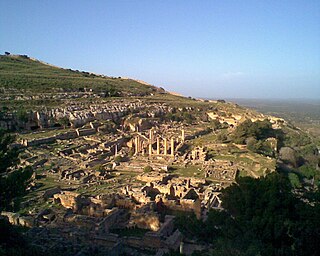
Cyrene or Kyrene was an ancient Greek and later Roman city near present-day Shahhat, Libya. It was the most important of the five Greek cities in the region, known as the pentapolis. It gave eastern Libya the classical name Cyrenaica, which it has retained to modern times.

The sculpture of ancient Greece is the main surviving type of fine ancient Greek art as, with the exception of painted ancient Greek pottery, almost no ancient Greek painting survives. Modern scholarship identifies three major stages in monumental sculpture in bronze and stone: the Archaic, Classical (480–323) and Hellenistic. At all periods there were great numbers of Greek terracotta figurines and small sculptures in metal and other materials.
Enkomi is a village near Famagusta in Cyprus. It is the site of an important Bronze Age city, possibly the capital of Alasiya. Enkomi is under the de facto control of Northern Cyprus.
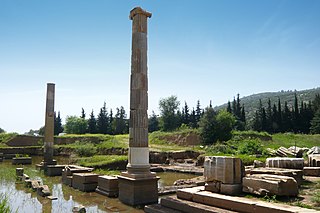
Claros was an ancient Greek sanctuary on the coast of Ionia. It contained a temple and oracle of Apollo, honored here as Apollo Clarius. It was located in the territory of Colophon, which lay twelve kilometers to the north, one of the twelve cities of the Ionian League. The coastal city Notion lay two kilometers to the south. The ruins of the sanctuary are now found north of the modern town Ahmetbeyli in the Menderes district of Izmir Province, Turkey.

The Temple of Apollo, also known as Apollonion, was a major part of the Panhellenic religious sanctuary located in Central Greece at Delphi. The temple and sanctuary at large were dedicated to one of the major Greek deities, Apollo, the god of archery, music, light, prophecy, the arts, and healing. There have been several temples built at Delphi throughout the history of the site, though the visible ruins seen in modernity are those of the temple built in the 4th century B.C.E. before its destruction under the orders of Theodosius I in 390 C.E.. During antiquity, the temple was home to the famous Greek prophetess the Pythia, or the Oracle of Delphi, making the Temple of Apollo and the sanctuary at Delphi a major Panhellenic religious site as early as the 8th century B.C.E., and a place of great importance at many different periods of ancient Greek history. References to Delphi, the sanctuary, the temple, and the prophecies of the Pythia are made throughout ancient Greek mythology and historical accounts from the periods of its use.

Heracleion, also known as Thonis and sometimes called Thonis-Heracleion, was an ancient Egyptian port city located near the Canopic Mouth of the Nile, about 32 km (20 mi) northeast of Alexandria on the Mediterranean Sea. It became inundated and its remains are located in Abu Qir Bay, currently 7 km (4.3 mi) off the coast, under ca. 19 ft (5.8 m) of water, and near Abukir. The sanctuary of Neith of Sais was located in Thonis. A stele found on the site indicates that late in its history the city was known by both its Egyptian and Greek names.

A blockade has been imposed by Israel and Egypt on the movement of goods and people in and out of the Gaza Strip since 2005. After Hamas' takeover in 2007, the blockade aimed to isolate Hamas and prevent the smuggling of weapons into Gaza. It has also led to significant humanitarian challenges, as it restricts the flow of essential goods, contributes to economic hardship, and limits the freedom of movement for Gaza's residents.

The Gaza War, also known as Operation Cast Lead, also known in the Muslim world as the Gaza Massacre, and referred to as the Battle of al-Furqan by Hamas, was a three-week armed conflict between Gaza Strip Palestinian paramilitary groups and the Israel Defense Forces (IDF) that began on 27 December 2008 and ended on 18 January 2009 with a unilateral ceasefire. The conflict resulted in 1,166–1,417 Palestinian and 13 Israeli deaths.
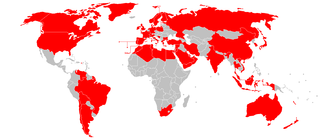
Following the 2008–2009 Israel–Gaza conflict, an international conference took place on 2 March 2009 in Sharm El-Sheikh, Egypt, where donor countries and international bodies pledged almost US$4.5 billion for humanitarian and reconstruction aid for the Gaza Strip. These funds bypassed Hamas, with the PA in collaboration with the donor community taking the lead in delivering and distributing the funds. Damage from the Israeli offensive was estimated to be almost $2 billion. However, actual transfers of aid had been beset by difficulties.
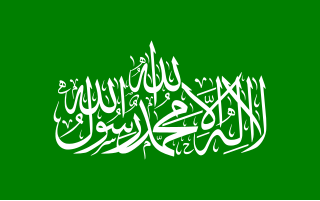
The Committee for the Propagation of Virtue and the Prevention of Vice is a group in the Palestinian territory of Gaza Strip, responsible for enforcing traditional Muslim codes of behavior (Sharia). According to journalist Khaled Abu Toameh and Middle East researcher Dr. Jonathan Spyer, the group forms part of the police forces of the Hamas de facto government.
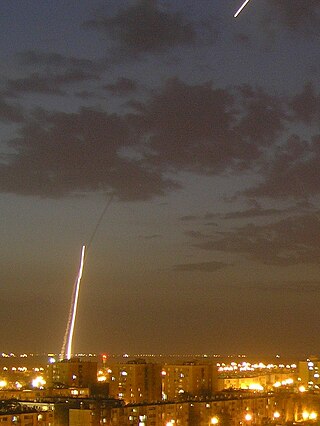
In November 2012, the Israel Defense Forces (IDF) launched Operation Pillar of Defense which was an eight-day campaign in the Hamas-governed Gaza Strip, which began on 14 November 2012 with the killing of Ahmed Jabari, chief of the Gaza military wing of Hamas by an Israeli airstrike.
The year 2013 in archaeology involved some significant events.

The governance of the Gaza Strip since the Hamas takeover of the Gaza Strip in June 2007 has been carried out by Hamas. The Hamas government in Gaza was led by Ismail Haniyeh from 2007 until February 2017, when Haniyeh was replaced as leader of Hamas in the Gaza Strip by Yahya Sinwar. As of November 2023, Yahya Sinwar continues to be the leader of Hamas in the Gaza Strip.

The 2014 Gaza War, also known as Operation Protective Edge , was a military operation launched by Israel on 8 July 2014 in the Gaza Strip, a Palestinian territory that has been governed by Hamas since 2007. Following the kidnapping and murder of three Israeli teenagers in the West Bank by Hamas-affiliated Palestinian militants, the Israel Defense Forces (IDF) initiated Operation Brother's Keeper, in which some 350 Palestinians, including nearly all of the active Hamas militants in the West Bank, were arrested. Hamas subsequently fired a greater number of rockets into Israel from the Gaza Strip, triggering a seven-week-long conflict between the two sides. It was one of the deadliest outbreaks of open conflict between Israel and the Palestinians in decades. The combination of Palestinian rocket attacks and Israeli airstrikes resulted in over two thousand deaths, the vast majority of which were Gazan Palestinians.
References
- ↑ "New Details Emerge in Mystery of Bronze Apollo Held by Hamas". BloombergBusinessWeek. Feb 10, 2014. Archived from the original on February 11, 2014.
- ↑ L'Apollo ritrovato che divide Gaza, La Repubblica, 10 October 2013
- ↑ The Apollo of Gaza: One fisherman's amazing catch, BBC. 21 February 2014.
- 1 2 3 4 5 6 7 "Fisherman nets centuries-old statue of Greek god Apollo in Gaza Strip" . The Independent. 10 February 2014. Archived from the original on 2022-05-07. Retrieved 5 July 2016.
- ↑ "Gaza pagan treasure holds promise for Islamic rulers". AFP. i24NEWS. Feb 15, 2014.